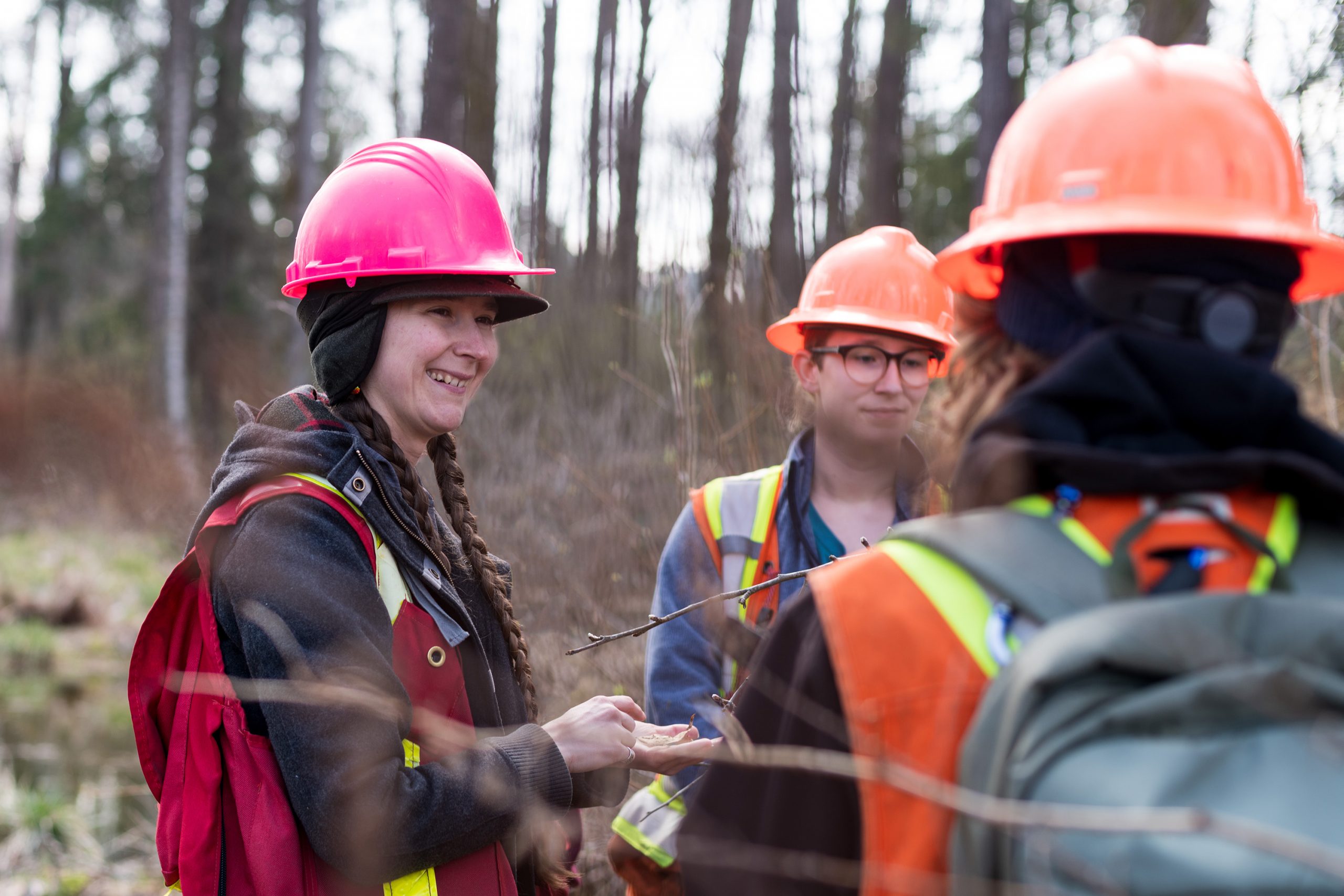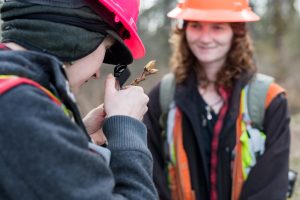
Within the urban forest at the BCIT Burnaby campus, Natural Resources faculty Julia Alards-Tomalin peers through a loupe. “See how the blossoms look like little snake tongues?” she asks a group of Forest and Natural Areas Management (FNAM) students that have crowded around her. They murmur in agreement as each takes a turn looking through the lens. They are carefully observing a red maple twig and learning how to describe the unique characteristics that help in plant identification. “The branches are opposite, which is typical of maples, and the red maples tend to have buds that are clustered at the end of the branches,” Julia explains. This lesson is part of a years-long project, in which Julia has collaborated with students and faculty across BCIT to create an Open Educational Resource (OER) textbook called Buds, Branches and Bark: A Guide to Winter Identification in the Pacific Northwest.
Over 190 students and faculty from three BCIT schools have contributed to the book’s creation. They have located, researched, and photographed specimens, composed descriptions, edited content, and designed layouts for information on how to identify more than 40 different plants in the winter. At the helm of this project, Julia has learned and developed every step of the way.
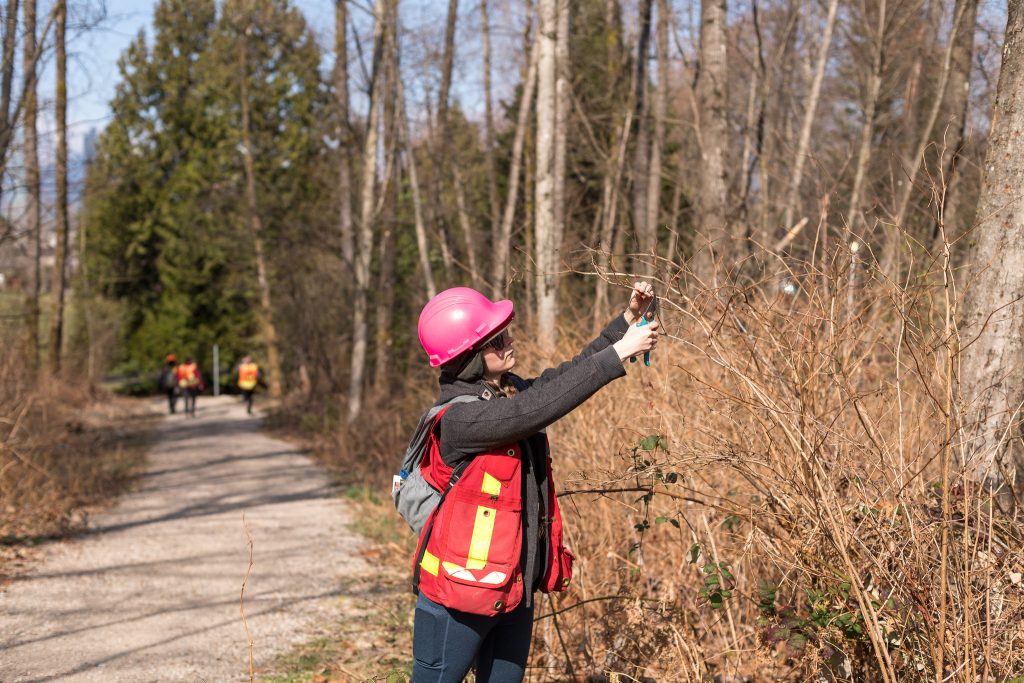
An idea that sprouted as a student and blossomed as an instructor
It was when Julia first joined BCIT as a student in the FNAM program that she noticed the class schedule—fall, winter, and spring—was not conducive to plant identification (ID). Standard plant ID books typically depict flowers, fruits, and leaves, but not the buds, branches, and bark that are what you are limited to seeing during Canadian winters. She began to search for winter ID books for our region and found only one—published in 1962 and was out of print. Thus, an idea began to percolate to create such a book for the plants in the Pacific Northwest.
In 2013, Julia returned to BCIT on a contract to teach part of the Ecological Restoration Lite program that was a partnership between BCIT and the Squamish Nation—where she is now a full-time instructor in the Natural Resources and Environment area. With her dream of a winter plant ID book still in mind, she mused about how the book could be made collaboratively. So, she applied for seed money for a BCIT Open Education grant. Then, she recruited her students to launch the first edition of the textbook in 2020. This edition ended up more of a brainstorming exercise, as pandemic restrictions caused the research to be done remotely.
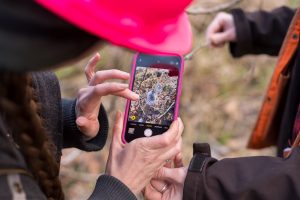
Learning from the first edition, Julia recruited even more students and faculty from across the institute. For the second edition, the student researchers were in the field making their own observations and taking pictures with their phones. With help from faculty and students from the Adobe InDesign program and Technical Writing program, they created templates, determined what types of photos were needed, and created an information hierarchy to guide the contributors. With the second edition published, they are now working towards the third edition.
Design graduate Maecel Enriquez who—with InDesign Instructor Darinka Aguirre’s guidance— helped redesign the book along with her cohort says, “Working with Julia and leading the creative direction of an Open Education Resource is a fulfilling experience.” Appreciating how design and technology can be used for social good, “seeing the redesigned book come to life and used in the community is heartwarming,” she concludes.
Jessica Sutherland, a Technical Editing student contributor says, “Editing Buds, Branches and Bark has been an incredible experience.” The project allowed her to apply the techniques she has learned in her program. “Julia welcomes questions and makes me feel that I am a valuable contributor,” she continues. “As students, we spend time and effort completing assignments that might sit in storage afterward. With this project, entries written by students then live on as an evolving reference. I feel this provides extra encouragement as all the collaborators play an active role in guiding this text’s future direction(s). Since it is open, the specialized knowledge within is decommodified and easily accessed by users. I am grateful for the chance to work on a project that serves multiple important functions, and which has deepened my understanding of the natural world around me.”
The power of collective knowledge
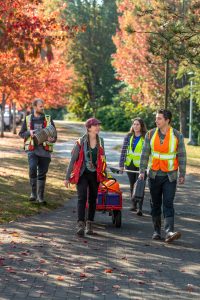
“When you use open pedagogy in your classroom, you are inviting your students to be part of the teaching process, participating in the co-creation of knowledge,” says Julia. This leads to more engaged learners who are contributing to the knowledge commons. Open Educational Practices (OEP) can improve the quality of educational resources and increase equity and accessibility to information, helping to eliminate learning barriers such as costly textbooks. “This really embodies a lot of what I feel is important in education,” Julia explains.
“Julia’s open education work for and with students brings many benefits,” says Lin Brander, Open Education Librarian at BCIT. “Instructors who engage their students using open education practices provide an opportunity for experiential learning. Students can work on something visible and valuable. When students work in the open, they can showcase their work and talk about the process of working collaboratively to produce a resource in their field when they are interviewing for their first jobs.”
Collaborative Learning and the cultural significance of OEP at BCIT
In 2019, BCIT released An Indigenous Vision which provides a framework for action and accountability. One of its principles is to encourage faculty to promote the integration of Indigenous ways of knowing into the curriculum. Julia believes this is a crucial issue. So, during her Master of Education studies, she researched Indigenous pedagogy. She interviewed diverse Indigenous community members to reimagine the Plant Identification course at BCIT.
“The use of OEP within the Plant ID course was a key component of integrating Indigenous pedagogy in the classroom,” Julia explains. Contributing to Buds, Branches and Bark provides a way for students to learn directly from the plants through their own observations, and to share this information with the larger community. “Sharing information with others also can provide a pathway for lifelong learning and intergenerational learning, which are important themes in Indigenous pedagogy,” she states.
Additionally, Julia says that “Changing the way we talk about plants will also change our relationship with plants and with the environment. When we can recognize and name the plants around us, we will also feel more connected to the land. I believe this is one step along this journey of reconnecting us to the land and helping ensure a brighter, more sustainable future for all of us.”
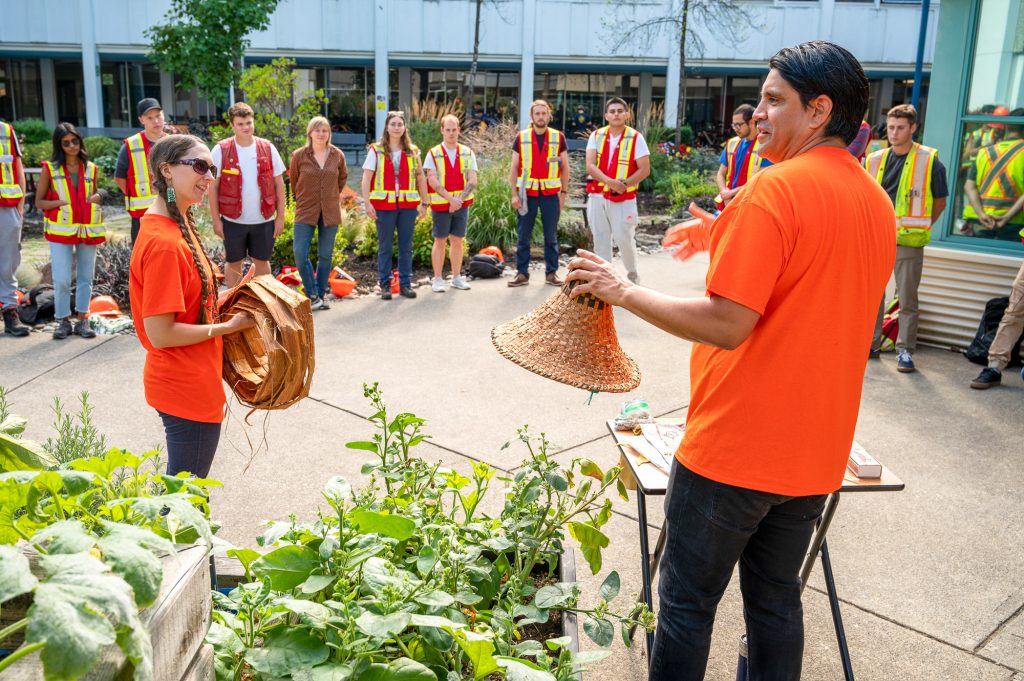
Rooted in indigenous tradition, learn how in a Three Sisters garden corn, beans, and squash are planted together to help each other grow strong. The BCIT Indigenous Garden provides this grounding space for students and staff at the Burnaby Campus.
How Open Education Practices naturally enhance mentorship opportunities
Undoubtedly post-secondary education is where people tend to find lifetime mentors. Julia has met many among her BCIT instructors including retired FNAM Instructor Jace Standish. She and Jace regularly take plant ID walks where they continue to make new observations. Furthermore, they continue to collaborate on research such as their recently published study in the Journal of Wetland Science and Practice (October 2022) on the effectiveness of vegetation identification for identifying wetland sites.
Now a mentor herself, Julia supports the students who work with her on the textbook. In addition to her role in providing the guidelines for contributing to the book and showing students where to look for plants, she publishes the students’ names in the book, and she is happy to act as a reference as they graduate and seek jobs in their fields. “This is such a non-disposable assignment,” says Julia, “The students can post their experience on LinkedIn and use it during job interviews. They are so excited to be published.”
Julia is open to collaborating with other OER contributors at BCIT to expand the book’s information with additional useful content. She is currently working with instructors and students to create plant tour maps so people can go out and find live examples of the plants in the book. Many colleagues have also expressed interest in making the book into an app. Julia has big dreams for where this could go as she continues to both learn and share her passion for plants in her pursuit of contributing to the knowledge commons.
To learn more about Julia’s experience of making the book with the BCIT community, you can view Julia’s presentation through Open BCIT.
Have you subscribed? Sign-up to receive the latest news on BCIT.
About Life at BCIT Series:
The Life at BCIT Series depicts moments in the lives of students and faculty each contributing uniquely to the richness and diversity of the BCIT community. Follow along on BCIT News to get a glimpse into the lives of BCIT students. Visit our Future Students page to learn more about studying at BCIT.
